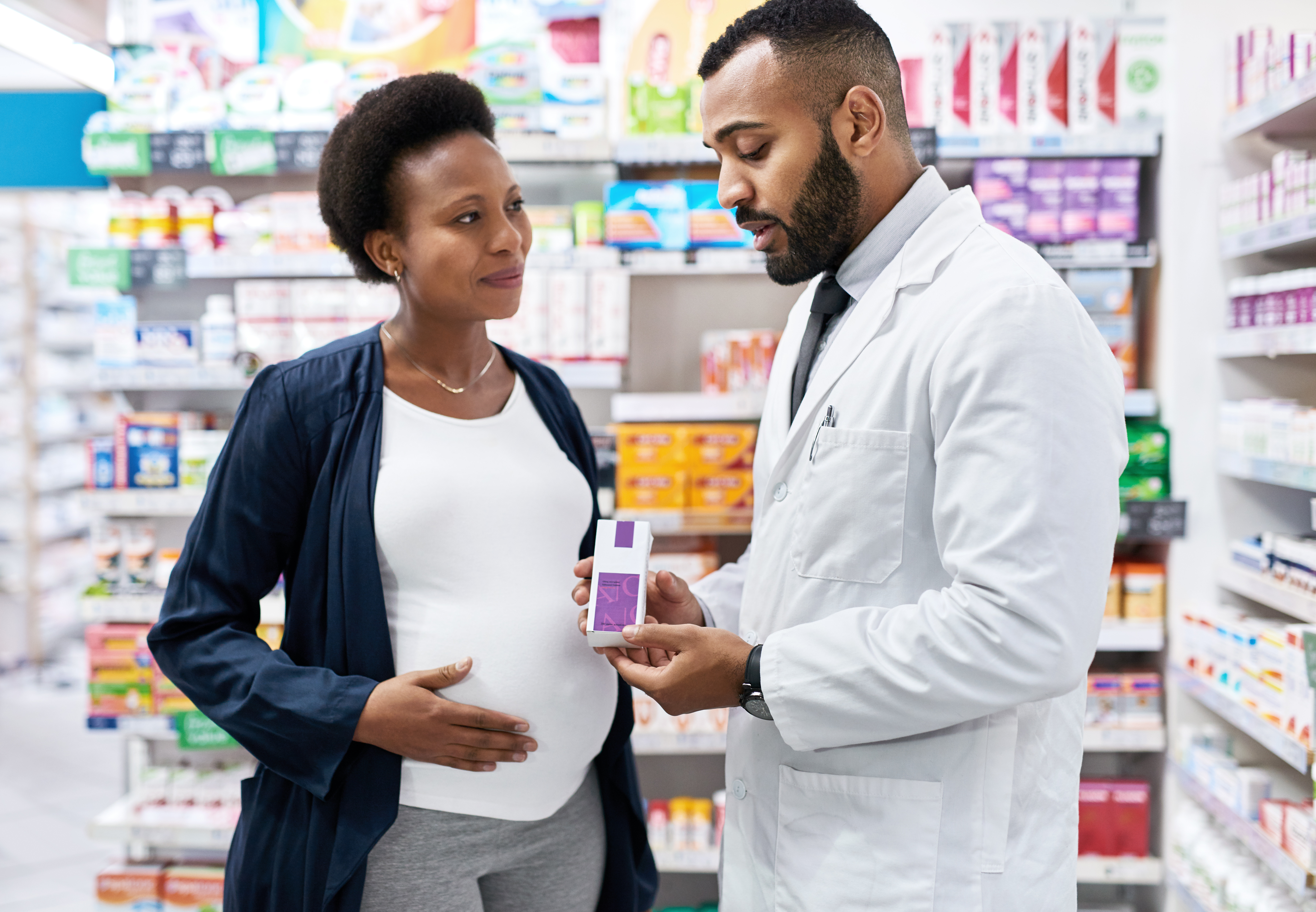Supporting women on their pregnancy journey
In CPD modules
Follow this topic
Bookmark
Record learning outcomes

Farah Ali has some important advice for community pharmacists on supporting women on their pregnancy journey and beyond…
Pharmacists can still carve a niche for themselves in this highly competitive market, which has seen a rapid decline in this sector, and expand their in-pharmacy sales.
Community pharmacy can also play a strong front-line role in supporting women on their way towards conceiving, during pregnancy and post-birth to meet their self care needs and those of their baby.
For most women, the first GP and hospital appointments do not occur until a number of weeks into pregnancy and there are usually timely gaps between GP and health visitor appointments.
This is where pharmacies can support and be a more readily available source of expertise for mums-to-be, with self-care tips, tailored advice and pregnancy-suitable medication, if needed.
With the plethora of products available at different stages of pregnancy, pharmacists can maximise sales in-pharmacy by merchandising a streamlined selection of stock mimicking the same flow as the pregnancy journey itself.
This will make it easier for customers to navigate and make the category work hard for itself. Set up a dedicated gondola, with a short-list of ‘go-to’ products, using better-known brands to help signpost the whole category.
For pharmacies with a Healthy Living Zone, you can tailor this towards pregnancy with messaging, products and advice that helps ‘hold their hand’ through the experience.
Common focus categories include:
· Fertility and conception: Presenting the opportunity to display ovulation kits, vitamin and mineral supplements, and pregnancy tests.
· Pre-natal, bucketed into the three trimesters: Offering products that help with constipation, nausea, morning sickness, stretch marks and skin care.
· Post-natal for new mothers: Breast pads, nipple shields, sanitary pads and breast pumps.
· New-born care: Nappy rash, skin rash and baby cradle cap treatments, nappies, thermometers, colic, reflux aids, and so on.
Hormonal changes during pregnancy can lead to skin flare ups, such as acne, dry and dehydrated skin on the face and body and also, as the skin expands, stretch marks. Educating women on caring for their skin from the very early stages of pregnancy and beyond birth is key.
For the body, recommend the twice-daily use of tried and tested, clinically proven stretch mark treatment oils to help maximise skin elasticity and reduce the formation of stretch marks, especially during periods of rapid growth. Fast-absorbing, oil-based formulas help replace the natural oil sebum, hydrate dry skin and improve skin comfort.
Maintaining a nutritious diet and keeping skin well-hydrated will ensure that it is better able to stretch in pregnancy. Collagen and elastin fibres in the skin are necessary to keep rapidly growing skin supple and elastic, and the stronger they are, the less likely they are to tear and leave resulting stretchmarks.
Therefore, it makes sense to eat foods that are rich in Vitamin E and C, zinc and silica, which help to form collagen. Vitamin C, in particular, is an important antioxidant that helps protect tissue from damage and can be found in foods, such as citrus fruits, bell peppers, strawberries, broccoli and tomatoes. Vitamins B2 (Riboflavin) and B3 (Niacin) are also said to help promote and maintain healthy skin. Vitamin B2 and B3 can be found in meats, fish, fortified cereals and eggs.
A diet rich in omega fatty acids while pregnant can also help promote healthy cell membranes, and brain growth and development in infants. This can be found in foods, such as oily fish, nuts and avocados.
Drinking plenty of water and taking regular exercise, such as swimming, walking, jogging, cycling and yoga, can also help to keep skin supple and improve circulation to keep the skin elastic and more able to stretch as it grows. This improved circulation also reduces the possibility of varicose veins and swollen ankles in pregnancy. Recommend oil-based specialist skin care products to help reduce scars following caesarean section.
Support women with lifestyle advice to support their changing body. Set up a ‘mum-to-be’ wellness clinic to drive footfall into pharmacy, offering one-to-one consultations looking at both medical and non-medical routes to self-care management, with printed check-lists for them to ensure they have what they need at every pregnancy and baby care stage.
During consultations, recommend healthy eating, nutrition plans and suitable forms of exercise, including pelvic floor exercise, which will strengthen the muscles that surround and support the organs around the pelvis – the womb, bowels and bladder – and help to control potential urine or bowel leaks when women cough, sneeze, laugh or exercise.
Pelvic floor exercise can also help to ease baby out during labour and aid in fast recovery after birth. Check if they have had the flu vaccination too.
Host ‘new mum meet-ups’ in the pharmacy, where they can interact with other parents in the local area to open up health dialogues and call on your professional expertise.
Ensure pharmacy staff are well trained in order to help build the confidence and earn the trust of new parents, so their loyalty to your pharmacy grows along with their family.
Enlist new services, such as blood pressure monitoring and baby weighing, that will also build on repeat visits and customer loyalty. Develop your own mum and baby ‘care packages’ that contain small size product essentials.
Be aware of local health messaging, campaigns and focuses to tie in with your business activities and know when NHS maternity, GP clinics and health visitor services are open to best advise patients on access.
And finally, create space to display literature on local pregnancy and new mum activities, so the pharmacy becomes an inter-connected community hub.
Farah Ali is a community pharmacist and general manager at Warman-Freed, Perrigo’s learning pharmacy.
Picture: Hiraman (iStock)
